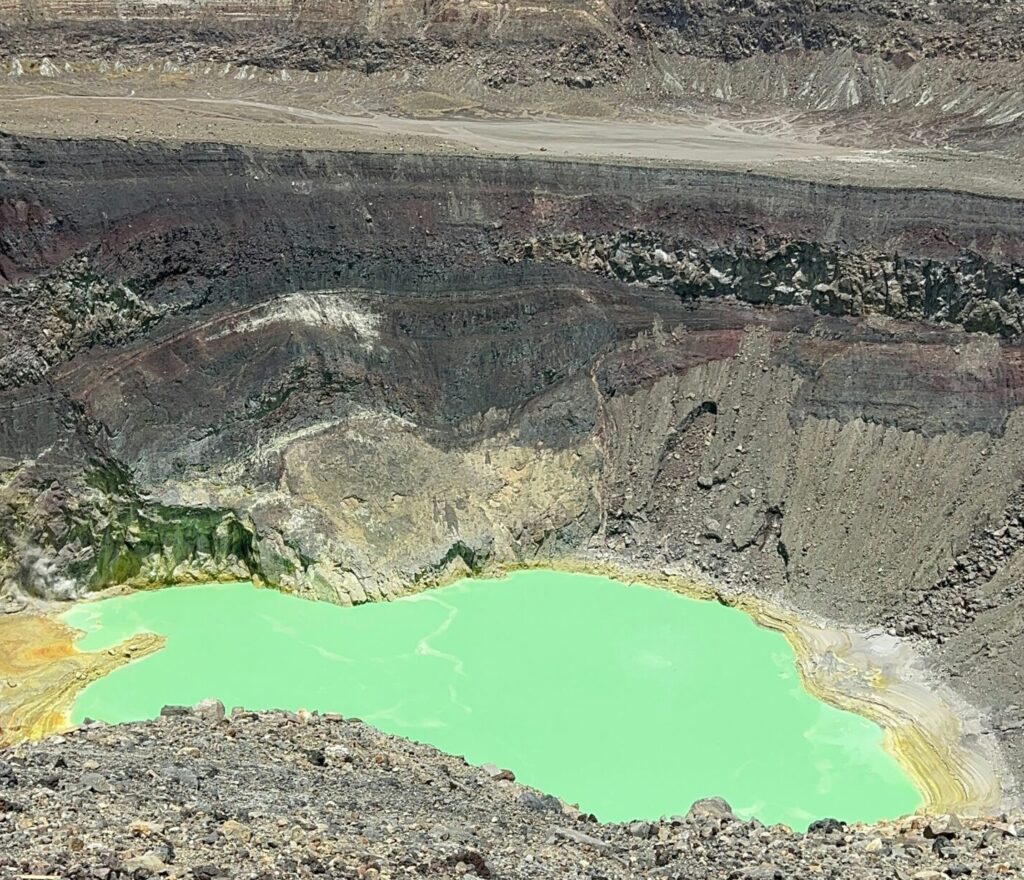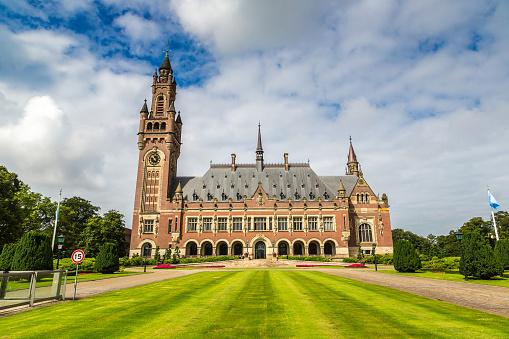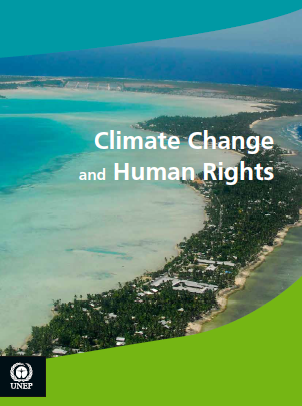Lithium has become a cornerstone of the global energy transition, powering technologies central to decarbonization efforts, such as electric vehicle batteries and large-scale renewable energy storage. As demand for this critical mineral accelerates, mining activity has intensified across the so-called “lithium triangle” – Argentina, Bolivia, and Chile – a region that holds nearly 60 percent of the world’s lithium reserves. Among these countries, Chile stands out due to its developed infrastructure and favorable investment conditions, positioning it as the second-largest lithium producer globally.
Yet, this vital industry sits at the heart of a growing paradox: while lithium extraction supports climate solutions, it can simultaneously generate serious local environmental and social consequences. Nowhere is this contradiction more apparent than in Chile’s Atacama Desert, where water-intensive extraction methods threaten fragile ecosystems and ancestral territories. These pressures are further compounded by social tensions, as Indigenous communities are frequently excluded from decision-making processes, raising concerns about environmental justice and the equitable governance of natural resources.
While Chile’s government has taken steps to tighten oversight and enforce environmental standards, these efforts coexist with extractivist policies and strategies of financial compensation that may ultimately undercut long-term sustainability. This blog explores how Chile is navigating this complex terrain, examining the environmental impacts of lithium mining, the legal and political responses to social resistance, and the deeper tensions between economic ambition, Indigenous rights, and ecological stewardship. At stake is a fundamental question: is Chile genuinely building a sustainable future, or simply rebranding extractivism in green terms?
The Regulation of Lithium in Chile: Between Economic Exploitation and Environmental Protection
Chile’s prominence in the global lithium market, alongside Australia, is underpinned by its vast reserves and central role in emerging green industries such as electromobility, battery manufacturing, and green hydrogen. Given its importance for both the global energy transition and domestic economic development, lithium occupies a unique legal status in Chile. It is classified as a strategic mineral and, unlike most other minerals, cannot be freely explored or exploited under standard mining concessions. Since 1979, Decree Law No. 2,886 and its subsequent regulatory framework have reserved lithium extraction for the State, state-owned enterprises, or private actors operating under special contracts approved by the President of the Republic. Initially, this restriction was based on lithium’s potential use in nuclear energy. However, as its value has shifted towards green energy applications, the rationale for state control has evolved.
In response to growing global demand, the Chilean government launched a National Lithium Strategy aimed at reconciling economic development with environmental and social responsibilities. Central to this strategy is a new public-private partnership between the state-owned copper giant Codelco and Sociedad Química y Minera de Chile (SQM), controlled by China’s Tianqi Lithium. This agreement, focused on the Salar de Atacama, home to over 90 percent of Chile’s lithium reserves, grants Codelco a controlling interest (50 percent + 1 share) in lithium operations, while SQM manages production until 2030. After this point, Codelco will assume full control.
The partnership aims to increase lithium output. By leveraging SQM’s existing infrastructure, including the world’s largest lithium refining plant in Antofagasta, Chile, the agreement seeks to enhance national benefit through a projected 85 percent share in operational margins via taxes starting in 2031.
Environmental and Social Issues Arising from Lithium Exploitation
Despite the economic opportunities presented by lithium, its extraction can have serious environmental and social consequences, particularly in the Atacama region of Chile. The dominant evaporation-based extraction method severely depletes groundwater, disrupts delicate desert ecosystems, and threatens the livelihoods and cultural practices of Indigenous communities such as the Colla and Lickan Antay. Evidence suggests that lithium mining has led to a 30 percent reduction in water levels in the Salar de Atacama, with ripple effects including loss of vegetation and declines in flamingo populations. Over-extraction -previously seen in the copper industry- has already caused the collapse of numerous salars, emphasizing the need for scientific monitoring and localized environmental management to avoid irreversible damage.
These environmental impacts have sparked a wave of legal challenges, centered on two main issues: the ecological harm resulting from unsustainable water use, and the lack of free, prior, and informed consent (FPIC) from Indigenous communities. Despite being legally protected under International Labour Organization Convention 169, many local communities are routinely excluded from decision-making on water rights, environmental monitoring, and project proposals. The Chilean Supreme Court has affirmed the State’s duty to consult Indigenous communities in activities that may affect their rights. In addition, the Consejo de Defensa del Estado (CDE) -a government agency that represents Chile in legal matters- has filed claims before environmental tribunals, asserting that lithium operations have caused “severe and irreversible” ecological damage. One notable case involved the Comunidad Indígena Atacameña de Peine, an Indigenous community with ancestral ties to the Atacama Desert. Together with the CDE, they sued Minera Escondida Ltda., Albemarle Ltda., and Compañía Minera Zaldívar SpA for overextraction from the Monturaqui-Negrillar-Tilopozo aquifer. The petitioners claimed groundwater levels had dropped more than 25 centimeters since 2005, exceeding legal thresholds and harming wetlands, ecosystems, and Indigenous livelihoods. A court-mandated settlement required 14 mitigation measures, including a phased cessation of water extraction, ecosystem conservation efforts, and community development funding.
At the regulatory level, oversight has also intensified. In 2022, the Superintendencia de Medio Ambiente (SMA) – Chile’s environmental enforcement agency – sanctioned Albemarle for breaching brine extraction limits. In 2024, it imposed urgent measures on SQM following environmental incidents involving protected species at its Salar del Carmen plant. Meanwhile, a pending case against Quiborax S.A. for 37 years of degradation in the Salar de Surire further highlights the systemic legal and ecological challenges tied to lithium extraction.
Financial Compensation: A Solution or a Trap?
While Chile has demonstrated regulatory activism, these efforts are often counterbalanced by a political strategy centered on financial compensation to affected communities, raising questions about the State’s true priorities.
The Chile State Development Corporation (CORFO) plays a central role in this model. As the administrator of lithium mining rights in the Atacama Salt Flat, CORFO oversees lithium contracts and negotiates economic benefits for the State and local communities. However, its institutional focus on productivity and growth, limit the extent to which environmental and community concerns are meaningfully integrated into lithium governance. For instance, in 2018, CORFO facilitated a controversial agreement between SQM and 18 Indigenous communities, amidst widespread protests and hunger strikes over groundwater depletion and environmental degradation. The contract allowed SQM to significantly expand lithium production, triggering backlash from civil society and Indigenous leaders who claimed that the deal lacked Indigenous consultation and effectively traded environmental harms for royalties.
Although the agreement included a 30 percent average royalty -considered globally competitive and shared between the Chilean state and the participating Indigenous communities- it was signed with a company facing legal challenges, environmental sanctions, and accusations of political corruption. Critics argue that such agreements co-opt community resistance by fostering economic dependency, often under conditions of structural vulnerability rather than free consent. In the Chilean context, where contracts are negotiated by CORFO rather than the communities themselves, local actors often have little influence over the terms. In such settings of structural vulnerability and weak participation, financial compensation may undermine long-term environmental justice by legitimizing harmful extractive practices under the guise of corporate responsibility.
Combining regulatory enforcement with compensation-based appeasement, this dual approach highlights a deeper contradiction in Chile’s governance: a tension between environmental obligations and the political imperative to maintain extractive growth.
Conclusion
While Chile possesses a robust institutional framework for environmental protection, economic imperatives continue to dominate its approach to lithium exploitation. Environmental regulation and human rights considerations are frequently subordinated to the goal of preserving Chile’s competitive edge in the global lithium market. This tension is evident in CORFO’s guiding principles in its negotiations with Albemarle and SQM, which emphasize the need to “avoid further losing positions in the world market and continue to be a global leader in lithium.” In this context, stringent environmental regulations are perceived less as essential safeguards and more as potential barriers to market leadership.
This prioritization of economic growth is enabled and reinforced by pronounced asymmetries of power and knowledge. Indigenous communities, who are disproportionately affected by the environmental impacts of lithium extraction, often lack meaningful participation in decision-making processes. Consultations tend to rely heavily on technical assessments produced by the mining companies themselves, undermining the transparency and legitimacy of these processes. Consequently, participatory mechanisms -though formally present- are frequently reduced to procedural formalities with limited substantive impact.
Over the long term, this development model may prove counterproductive. Environmental degradation—through water depletion, biodiversity loss, and ecosystem disruption—not only threatens the rights and livelihoods of local communities but also jeopardizes the long-term sustainability of the lithium industry itself. By allowing environmental harm to be mitigated through compensation rather than prevented, Chile risks reputational damage as international supply chains increasingly demand adherence to higher environmental and human rights standards.
To maintain its leadership in the global lithium sector, Chile must shift toward a model that genuinely integrates sustainability, inclusivity, and environmental responsibility. This requires more than rhetorical commitments; it demands the rigorous enforcement of environmental standards, meaningful consultation with affected communities, and investment in less harmful extraction technologies. Only through such a transformation can Chile ensure a just and sustainable lithium future.







